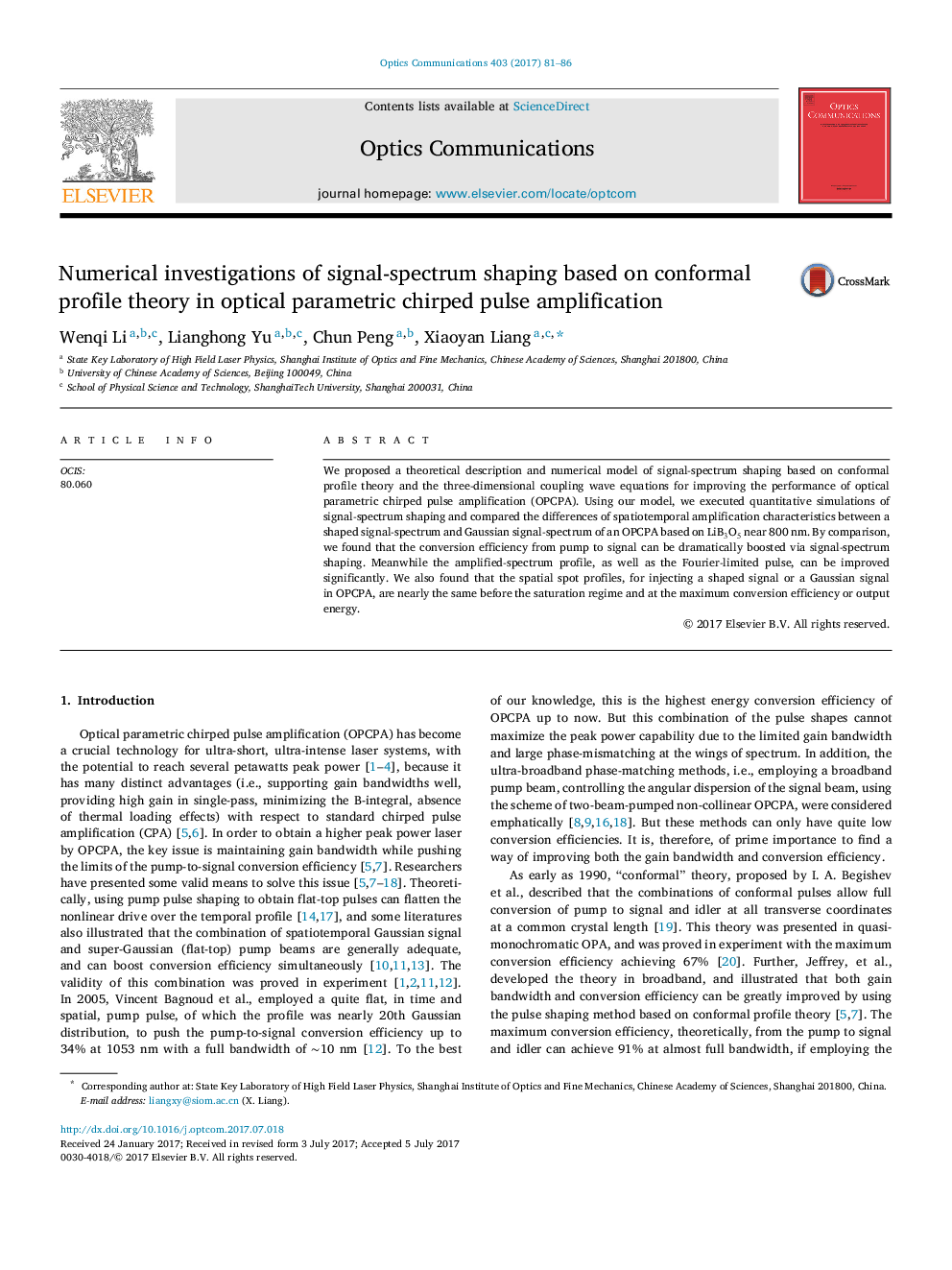| Article ID | Journal | Published Year | Pages | File Type |
|---|---|---|---|---|
| 5449255 | Optics Communications | 2017 | 6 Pages |
Abstract
We proposed a theoretical description and numerical model of signal-spectrum shaping based on conformal profile theory and the three-dimensional coupling wave equations for improving the performance of optical parametric chirped pulse amplification (OPCPA). Using our model, we executed quantitative simulations of signal-spectrum shaping and compared the differences of spatiotemporal amplification characteristics between a shaped signal-spectrum and Gaussian signal-spectrum of an OPCPA based on LiB3O5 near 800 nm. By comparison, we found that the conversion efficiency from pump to signal can be dramatically boosted via signal-spectrum shaping. Meanwhile the amplified-spectrum profile, as well as the Fourier-limited pulse, can be improved significantly. We also found that the spatial spot profiles, for injecting a shaped signal or a Gaussian signal in OPCPA, are nearly the same before the saturation regime and at the maximum conversion efficiency or output energy.
Related Topics
Physical Sciences and Engineering
Materials Science
Electronic, Optical and Magnetic Materials
Authors
Wenqi Li, Lianghong Yu, Chun Peng, Xiaoyan Liang,
